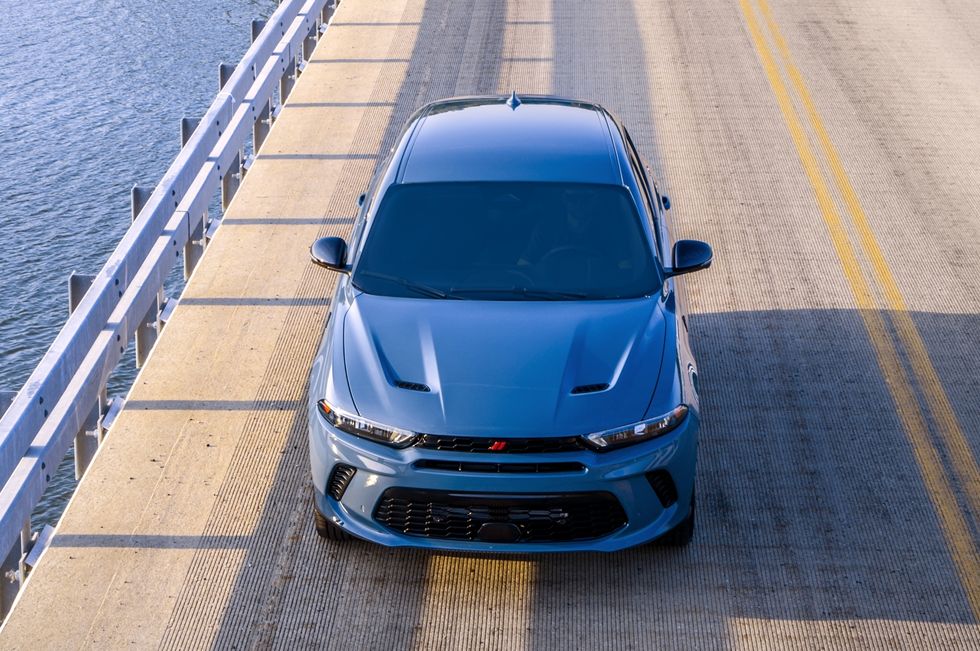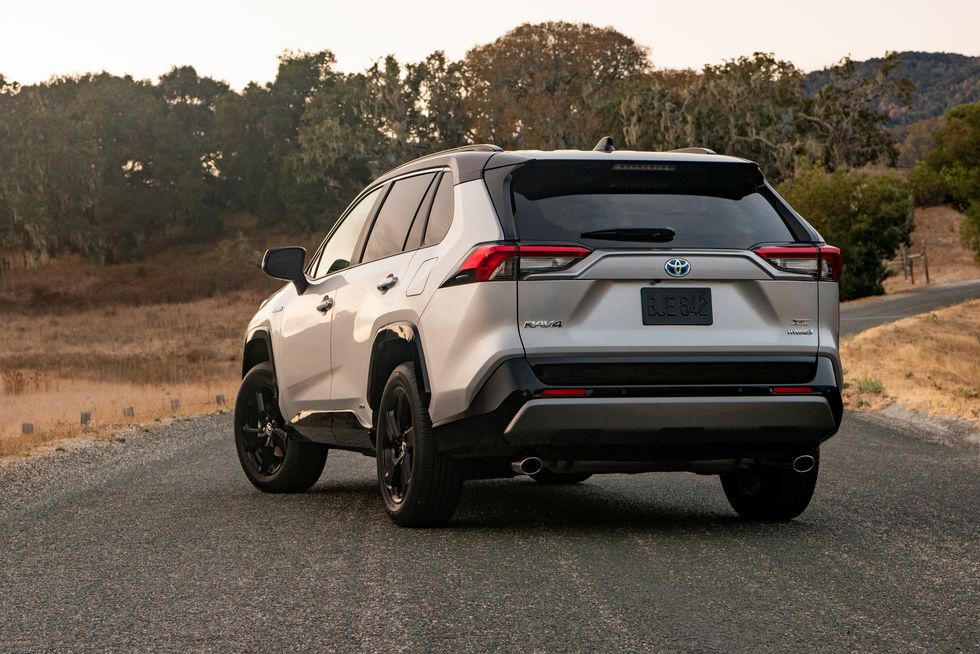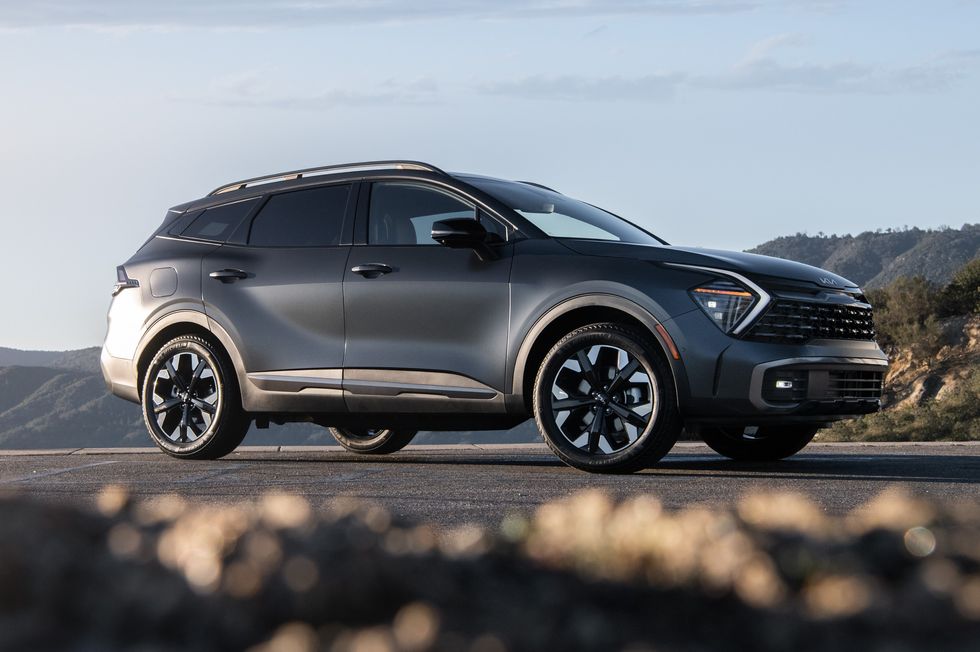- Even if the US reaches the golden 1 million number for EVs sold this year, electric-vehicle market share may not change much, as auto sales have surged for most mainstream automakers.
- GM came in second in the first-half EV sales race (behind Tesla) with more than 36,000 delivered, bolstered heavily by the soon-departing Bolt (pictured above).
- Hyundai/Kia placed third, followed by Ford, then fifth-place Rivian, which has sold 20,586 EVs this year. Kia posted its best-ever first half, up 18.3% to 394,333, while Subaru sales climbed 15.3% to 304,092.
By our estimate, nearly 470,000 electric vehicles were sold in the US in the first half of this year. We will need to up our game a bit to reach Cox Automotive’s prediction that American EV sales will reach 1 million units in 2023, though expectations of a strong third quarter just under way will help.
Tesla remains the biggest purveyor of EVs in the US. The company continues to report global sales only, so the actual number is an estimate. Cox Automotive in late June estimated Tesla sold 329,137 vehicles in the US year-to-date through June, up 26.7% over the first half of 2022.
General Motors remains the number-two EV automaker in the US, with 36,024 sold in the first half, up 469% over the first half of ‘22. The Chevrolet Bolt/Bolt EUV accounted for 33,659 of GM’s EVs, up 360.9% (Bolt production surged in the middle of ‘22, when second-half sales pushed GM past Ford Motor Company and Hyundai-Kia for second place.)
Despite the Chevy Bolt’s lame-duck status—it ends production by the end of this year—GM does not plan to give up EV market share. GM has committed to building 70,000 Bolts total for the year, while it adds the Chevrolet Blazer EV, Equinox EV, and Silverado RST First Edition pickup EV. GM already has begun production on the Silverado EV Work Truck, and first deliveries to commercial customers with reservations will begin “soon.”
Hyundai and Kia place third in US EV sales, with 22,139 Hyundai Ioniq5s, Ioniq6s, Kona EVs, and Nexo fuel-cell models sold in the first half. Ioniq5 was the bestseller among these, at 13,641. Kia sold 8328 EV6s, down 51%, but complete sales numbers were unavailable for Niro and Soul EVs.
Ford had its own surge in F-150 Lightning production this year. The Dearborn automaker is fourth among EV sales with 25,709, up 11.9%. While Lightning sales rose 281.4% year-over-year to 8757, Mustang Mach-E sales fell 20.6% to 14,040 and E-Transit was off 3.2% to 2912.
Rivian has sold 20,586 EVs this year, which we figure is good for fifth place. The remaining 35,000 or so EVs sold year to date include the popular Volkswagen ID.4, at 16,448, plus 10,087 Audi e-trons in all its iterations, the Polestar 2, Toyota BZ4X, Lexus RZ, and Nissan Ariya.
Even if the US reaches the golden 1 million number for EVs sold this year, electric-vehicle market share may not change much. Auto sales surged for most mainstream automakers in the first half of the year, except for Toyota USA (which includes Lexus).
GM sold 1,295,186 new cars and trucks, up 18.3%. Toyota was second, with 1,038,520 sold, though down 0.7%. Ford came in third with 1,007,568 delivered, up 10%.
Toyota explains its drop in sales on a persistent parts supply problem affecting production. Toyota brand’s inventory remained below 25 days’ supply—lowest in the industry. Dealer inventory has increased to 24,000 vehicles from 19,000 this year, but they’re all accounted for, having been sold before hitting the lots, says David Christ, group executive vice president for the Toyota division.
“We have a lot of pent-up demand,” Christ told Autoweek.
Electrified Toyotas and Lexi, entailing BEVs, hybrids, and PHEVs, account for 26% of all vehicles it sold in the first half, compared with 25.5% in H1 of 2022. That totals 228,824 BEVs, PHEVs, and hybrids sold so far this year.
Toyota’s BZ4X BEV accounted for 3659 of that and Lexus RZ added 1117 in the first half of ‘23, up from just 232 BZ4Xes year-over-year.
The new Prius was down 26.1% for the first half to 14,941 as supply ramped up, but sales were up 26.5% in June to 2466 units. Prius buyers are now falling into three camps, Christ says. First are loyal Prius buyers, though with thinning ranks. “It is fair to say some have moved on to pure EVs,” he said, noting Prius-turned-EV consumers tend to be early adapters. “That didn’t surprise us.”
Next is a “very strong” customer base, many of which have traded in Camry hybrids because the new model has much better performance, handling, and acceleration, Christ says, as well as the 180-degree flip on styling quality. Third are “conquest” customers, who have never owned a Toyota before.
Other numbers from the top-selling automakers…
General Motors
Buick continues its recovery, up 68.3% to 80,890 for the first half. Cadillac was up 21.4% to 75,198, and GMC was up 13.1% to 286,613. Of the 852,187 Chevrolets sold (up 16.5%), Bolt EV/EUV outsold Blazer (33,343, up 0.7%) and Colorado (33,165, off 24.9%). Corvette was down 2.4% to 17,029.
Ford
Sold 25,471 ICE Mustangs in the first half, off 2.9%. That was enough to lead the pony-car wars, with Dodge Challenger down 5% to 24,275 and Chevy Camaro up 54% to 17,337.
Toyota
RAV4, its bestseller for several years, was down 6.9% in the half to 187,017, while former bestseller Camry posted a strong first-half increase of 10.9% to 150,742. Both models were up in June.
Stellantis
Down 1% year-over-year in the first half, to 802,975 units, though also like Toyota, it had a very good June—up 6% to 434,638. Jeep sales fell 12% in the half to 335,487. Dodge was up 31% to 110,727 on the strength of Charger and Durango sales. Dodge sold 2597 Hornets last month, and Alfa Romeo sold 117 Tonales.
Honda
While still EV-less, American Honda, which includes Acura, recorded a 24.8% sales increase to 611,532 for the first half. June’s sales jumped 56.9% to 111,498. Bestseller CR-V was up 40.4% to 163,697. The well-reviewed Integra was Acura’s second-bestseller (after MDX) to 16,514 (up 1,003.9%).
Nissan
Nissan Group topped even Honda’s increase, up 25% to 447,885. For June, sales rose 32% to 227,824. Armada SUV sales surged 190.5% to 13,187, while 966 Z-cars found their way to customers in the first half.
Hyundai
If traffic looks more handsome lately, it might be due to Elantra’s 53% sales increase to 74,738. Bestseller Tucson was up 20% to 100,591. Total brand was up 15% to 394,613.
Kia
Posted best-ever first half, up 18.3% to 394,333. Bestseller Sportage was up 37.3% to 71,889.
Subaru
Total sales climbed 15.3% to 304,092. While not its bestsellers, two models with manual gearbox options had big increases: WRX, up 147.5% to 15,373, and BRZ, up 51.1% to 2512.
If you are shopping for a new car this year, have you found dealers willing to negotiate? Please comment below.
Contributing Editor
As a kid growing up in Metro Milwaukee, Todd Lassa impressed childhood friends with his ability to identify cars on the street by year, make, and model. But when American automakers put an end to yearly sheetmetal changes, Lassa turned his attention toward underpowered British sports cars with built-in oil leaks. After a varied early journalism career, he joined Autoweek, then worked in Motor Trend’s and Automobile’s Detroit bureaus, before escaping for Mountain Maryland with his wife, three dogs, three sports cars (only one of them British), and three bicycles. Lassa is founding editor of thehustings.news, which has nothing to do with cars.
Read the full article here






